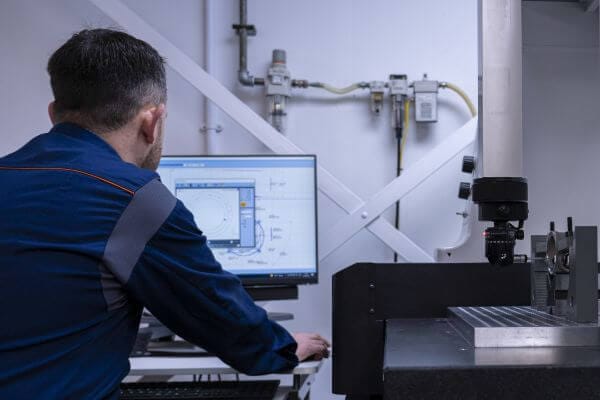Published - 23rd Oct 2024

Engineers use software for faster optimisation of design and process
In modern foundries, technological advancements have played a significant role in improving the quality and efficiency of metal casting processes. At Haworth Castings, foundry engineers use casting simulation software to predict and optimise the sand casting process. This minimises the time needed for fine-tuning before production and saves the costs expensive pattern changes, delivering high quality sand castings first time.
Casting simulation software models the entire sand casting process in a virtual environment. The physics and thermodynamics governing metal casting are highly complex, so simulation software that models how molten metal will behave in a mould in real life can significantly reduce the time needed to manipulate various inputs for the optimal result.
Foundry engineers remain vital to the sand casting design and optimisation process, and their expertise is key to ensuring that the software is used to best effect.
Modern CAD (Computer-Aided Design) software allows designers to digitally create 3D models of products which can then be assessed for manufacturability. Our technical team makes an initial assessment of any new customer product model, and uploads the design in the appropriate CAD format to our casting simulation software. Considerable expertise is then required to design a casting method and running system that will produce the best quality sand cast component to meet the design specifications.
Expertise is required to set appropriate parameters for the casting simulation software to run effectively for any chosen component. Critical parameters may include:
As metal solidifies its volume contracts in complex ways which can cause metallurgical defects in the casting. Without being able to model these complex interactions, the only way foundry engineers can check and improve casting quality is by adjusting various parameters and repeating the process. Repeating the process in real life is both expensive and time-consuming.
Good casting simulation software replicates the behaviour of molten metal as it flows into a sand mould, cools and solidifies. A full flow and solidification analysis is far more streamlined than real time testing, significantly reducing the overall process time.
Visualising the entire process through simulation allows our technical engineers to spot where they can make changes to any one of the many design elements in the mould. The gating and feeding system and pouring parameters which affect the flow of molten metal can be adjusted quickly, with updated simulation results in hours rather than the weeks this would take in real time.
Casting simulation also shows where changes to the component design itself will deliver benefits. In this case, suggested design modifications will be referred back to the customer for a decision before the final design and process are approved.
We have shared the benefits of casting simulation software for new parts, but the software is just as helpful in re-assessing the production of existing parts.
At Haworth Castings, we have a policy of continuous improvement and regularly assess existing products to ensure that our method is fit for current purposes. For example, we may be able to suggest a way of making the sand casting process more efficient, or a way of reducing scrap, taking account of the customer’s specific requirements. By running casting simulation, we can check whether our suggested modifications to either the process or the component design will yield benefits for the customer.
Casting simulation software plays a vital role in the modern foundry, offering a host of benefits that improve quality, reduce costs and streamline the sand casting production process.
By enabling foundry engineers to visualise every step of the casting process quickly, the software helps the experts optimise critical parameters without the need for customers to invest in repeated patterns and tooling. Whether developing new products, or optimising the sand casting of existing products, our experts at Haworth Castings will continue to use the best casting simulation software for the benefit of customers.
Contact us now to find out more about our sand casting expertise, and how we can deliver high quality new and existing products for your business.
If you have a project, talk to our experienced sales team
Contact us